The UK wine market has been one of the toughest for Greek wineries to gain an entry into. The dominance by the supermarkets, whose focus is often on price, leaves room only for a limited number of players who might be able to compete. Despite this, we have witnessed some interesting and promising developments over recent months: Marks & Spencer includes four Greek wines as part of their courageous Eastern Med portfolio; the Wine Society has increased their offering with some very special selections, and Berry Bros also boasts a small, yet thoughtfully structured list.
Perhaps as direct result, British wine writers/critics start to show a genuine interest to educate themselves and their readers about Greek wine. I was contacted in August by Andrew Neather, Comment Editor and wine critic for the London Evening Standard, and Victoria Moore, wine correspondent for the Daily Telegraph. They expressed interest to set up a visit to Greece, as neither had ever tasted professionally here.
The official Greek wine industry bodies have to my knowledge no budget available for European initiatives. In order to take advantage of the opportunity, I contacted some wineries privately to help with the funding. I give them a lot of credit, as they agreed within a few days to go ahead. Keeping in mind that Greek wineries are under severe pressure as a result of the ongoing financial crisis, this decision cannot have been taken lightly. I am truly happy that they all executed together as a team, else this four day trip would not have been possible.
The participating wineries were Alpha Estate, Kir Yianni, Gerovassiliou, Biblia Chora and Tsantali. All are classic in the sense that they are respected and established, with existing exports in many countries. They are also all located in Northern Greece, which allowed planning for an efficient schedule.
Our first stop was at Alpha Estate in Amyndeon, Florina. The first vines of this now 69 ha estate were planted in 1995. The owners painfully bought a total of 82 small plots of land over the years. Their first release was the 03 vintage in 2005. Despite being a relative newcomer to the Greek wine scene, Alpha is one of the most established brands within and outside of Greece.
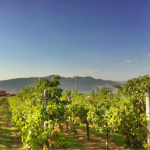
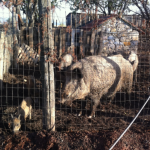
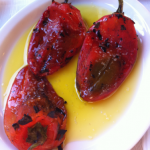
Sandy clay soils, the Petron and Vegoritida lakes, as well as the presence of a vast mountain range all contribute to unique growing conditions. Florina is Greece’s coldest vine growing region and therefore a demanding place for any winemaker.
Thirteen grape varieties are planted at Alpha Estate, 55% are red, 45% white. Xinomavro dominates with 35% of the total. The vineyards are located at an altitude of 620 to 710 metres (2000 to 2300 feet), the vines are planted North-South and West-East. A sub soil irrigation system was installed, and there are a total of 69 different irrigation plots. Angelos Iatridis, the winemaker and co-founder, refers to this as “precision viticulture”.
Right next to the vineyards are two enclosures for goats and wild boars. Local products like cheese from the goats and sausages from the wild boars will be added to Alpha’s future offering.
We tasted the full range of 20+ wines; the one wine that clearly stood out for me was the 2009 Xinomavro Reserve Old Vines, coming from 90+ years old ungrafted Xinomavro vines. It was concentrated, explosive, medium-bodied with a lot of refined elegance.
After having enjoyed one of the most wonderful breakfasts ever at the Kontosoros Guest House/Restaurant (check out Victoria’s favourite in the pictures, Florina red peppers), we made our way to the Kir Yianni winery in Naoussa.
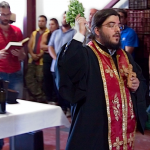
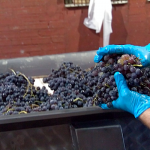
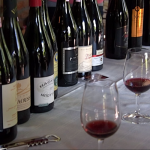
Kir Yianni owns 58 ha of land in Naoussa, of which just over 40 ha are planted with vines. In addition, the estate also holds 16.5 ha of land in Amyndeon. In Naoussa, the vineyards are located at an altitude of 280 to 300 metres (900 to 980 feet); the soils vary but are dominated by sandy clay and loam. A lot of research is going into analyzing the different soil types in order to identify the best possible clones. At this point in time, the vineyards have been split into 34 different parcels, and each one is cultivated under its own regime. Half of the vineyards are planted with Xinomavro.
As it happened, our visit marked the very first day of the Xinomavro harvest. Tradition demands that the local priest arrives at the winery to give his blessings. This was even a first for me, and we all enjoyed this special celebration.
After this, we tasted all Kir Yianni wines, from both the Amyndeon and Naoussa vineyards. My personal favourite is the Kali Riza, a 100% Xinomavro from 60 year old vines in Amyndeon. The first release is from the 2009 vintage, and I adore the purity and finesse of this wine, which seems to come with a naturally built-in delicious factor.
At lunchtime, Stellios Boutaris had organised a stunning tasting of around 20 Naoussa Xinomavro wines from nearly every producer from the area. This was a unique educational tasting opportunity for Victoria
and Andrew, who enjoyed it tremendously. I take my hat off to Stellios – he is not “only” concerned with the exposure of his own wines, but has very much the region as a whole at heart.
The next morning, we visited the Gerovassiliou winery in Epanomi, close to Thessaloniki. Evangelos Gerovassiliou studied at the University of Bordeaux under Professor Emile Peynaud. He worked for many years as a winemaker for Domaine Porto Carras, and planted the first vines at his own estate in 1981. The 56 ha vineyards are surrounded by sea from three sides; the soil consists of sand and clay. The total annual production is 350 – 400000 bottles, of which 30% are being exported. Greek varieties include Malagousia, Assyrtiko, Limnio, Mavroudi and Mavrotragano, international varieties are made up of Sauvignon Blanc, Chardonnay, Viognier, Syrah, Merlot and Grenache Rouge.
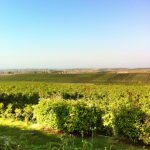
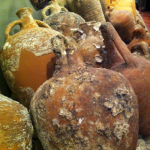
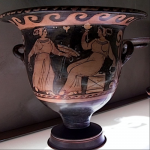
Evangelos Gerovassiliou is the father of Malagousia, being the first winemaker to introduce wines from this grape and largely responsible for reviving this variety that was nearly extinct 30 years ago. He also owns one of the largest collections of corkscrews in the world, with more than 2500 pieces. This collection, as well as other vito-vinicultural tools, is housed in the Gerovassiliou Wine Museum, at the heart of the winery.
From the 10 wines that we tasted, I was most struck by the refined aromatic qualities of the 2011 Malagousia. It has a wonderful texture and is quite explosive on the palate, with a strong and long finish.
From there we made our way to the Biblia Chora Estate, which is located at the slopes of Mount Pangeon at Kokkinochori, Kavala. Evangelos Gerovassiliou partnered up with fellow winemaker Vassilis Tsaktsarlis to create this stunning winery in 2001. It takes its name from the variety “Biblia” that was cultivated in the area at the time of the Phoenicians. The 45 ha organic vineyards are located at an altitude of 380 metres (1250 feet), the rocky soil features mainly limestone and clay. Fruit from another 15 ha is brought in.
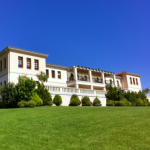
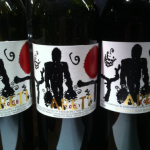
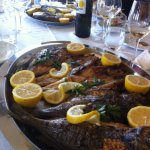
The Greek varieties of Assyrtiko and Agiorgitiko are cultivated, as well as the international Chardonnay, Gewuertztraminer, Semillon, Sauvignon Blanc, Cabernet Sauvignon, Merlot and Syrah. In addition, 27 varieties are planted for experimental purposes. Cultivation and consequent revival of unknown varieties of the area also takes place, I will report in a separate article about this.
We tasted 12 wines, the Areti 2008, a 100% Agiorgitiko, stood out. The vines were planted in 1998, the first vintage of this wine was in 2003. We also tried the 2007 and 2003 vintages, the latter being remarkable fresh, well structured with surprising backbone left on the finish. All three vintages left me deeply impressed.
After the tasting, we shared a wonderful meal at the winery in a truly private atmosphere. In the afternoon, we continued our journey towards Ouranopolos in Chalkikdiki where we met with the Tsantali team at the Eagles Palace Hotel. The Tsantali family is one of the true giants of the Greek wine industry, having started operations more than 100 years ago in 1890. They own four wineries in Northern Greece, are present in 14 different viticultural zones, and work together with 29000 farmer’s families. They produce a total of 65 different labels and export wines into 55 countries. The annual production amounts to 13 million litres, or 10 million bottles, of which 5 to 10% are part of their high quality line.
We tasted 12 wines from their top range, it was no surprise that I was most drawn towards the 2007 Rapsani Grand Reserve, a wine that I have long admired. It is a blend of Xinomavro, Krassato and Stavroto. In addition, the 2001 Metoxi, a blend of Limnio and Cabernet Sauvignon was outstanding.
The next morning Andrew and I were taken to Mount Athos, where Tsantali leases land from the Panteleimon Monastery, the first plantings took place in 1971. Victoria had to stay behind, as no female is allowed to enter the Holy Mountain. Its rich history is closely related to the Orthodox Church for more than 1000 years. 110 ha of vineyards are organically cultivated by Tsantali. Varieties include Assyrtiko, Athiri, Chardonnay, Roditis, Sauvignon Blanc, Cabernet Sauvignon, Grenache Rouge, Limnio, Syrah and Xinomavro. In addition, trial cultivation of Asprouda, Cabernet Franc, Montepulciano, Mourvedre and Tannat is taking place. Different clones for Limnio are also nurtured.
The vineyards we saw were stunningly beautiful. Tsantali has also renovated old stone buildings to encompass the storage of barrels, as well as private rooms. They plan on expanding this project in the future. This place on magical Mount Athos has it all – striking vineyards, a rich history, all the ingredients for rich story telling. I wonder what would happen if they were to launch a single vineyard, top quality Xinomavro varietal wine in the future. This surely would turn heads!
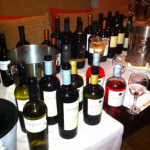
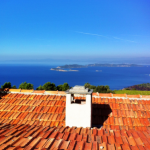
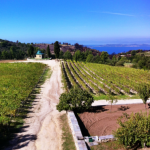
To sum it up, these were four fantastic days. We tasted around one hundred wines, and the winemakers went out of their way to make us feel at home. Thank you everyone involved, this was a great showcase of real teamwork. A special thank you goes out to Victoria and Andrew, who sacrificed their weekend in order to get on site exposure to Greek wine.
Update – UK Evening Standard: The Discerning Drinker: The struggle for Greece’s finest red wine

I would have gladly sacrificed more than my weekend for such a fantastic trip! Look forward to seeing Victoria and Andrews review of the wines.
Paul, I will update this article with the reviews as they come in, see the first one above.
Pingback: Από τη Goldman Sachs στους δρόμους του κρασιού
Pingback: Από τη Goldman Sachs στους δρόμους του κρασιού